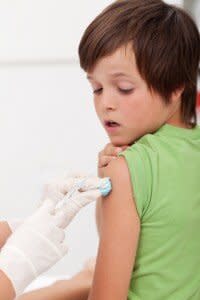Measles Remains Global, Domestic Threat 50 Years After Vaccine

In an article published on December 5 by JAMA Pediatrics, CDC's Mark J. Papania, M.D., M.P.H., and colleagues report that United States measles elimination, announced in 2000, has been sustained through 2011. Elimination is defined as absence of continuous disease transmission for greater than 12 months. Dr. Papania and colleagues warn, however, that international importation continues, and that American doctors should suspect measles in children with high fever and rash, "especially when associated with international travel or international visitors," and should report suspected cases to the local health department. Before the U.S. vaccination program started in 1963, measles was a year-round threat in this country. Nearly every child became infected; each year 450 to 500 people died each year, 48,000 were hospitalized, 7,000 had seizures, and about 1,000 suffered permanent brain damage or deafness.
People infected abroad continue to spark outbreaks among pockets of unvaccinated people, including infants and young children. It is still a serious illness: 1 in 5 children with measles is hospitalized. Usually there are about 60 cases per year, but 2013 saw a spike in American communities – some 175 cases and counting – virtually all linked to people who brought the infection home after foreign travel.
"A measles outbreak anywhere is a risk everywhere," said CDC Director Tom Frieden, M.D., M.P.H. "The steady arrival of measles in the United States is a constant reminder that deadly diseases are testing our health security every day. Someday, it won't be only measles at the international arrival gate; so, detecting diseases before they arrive is a wise investment in U.S. health security.
Image: Child getting a vaccine, via Shutterstock
